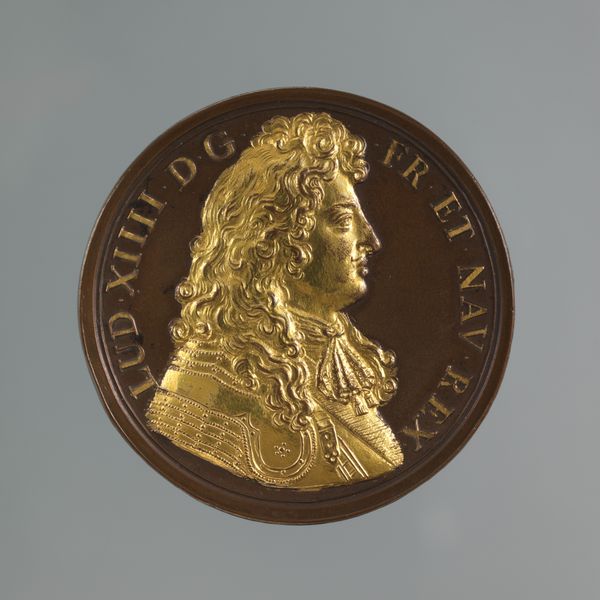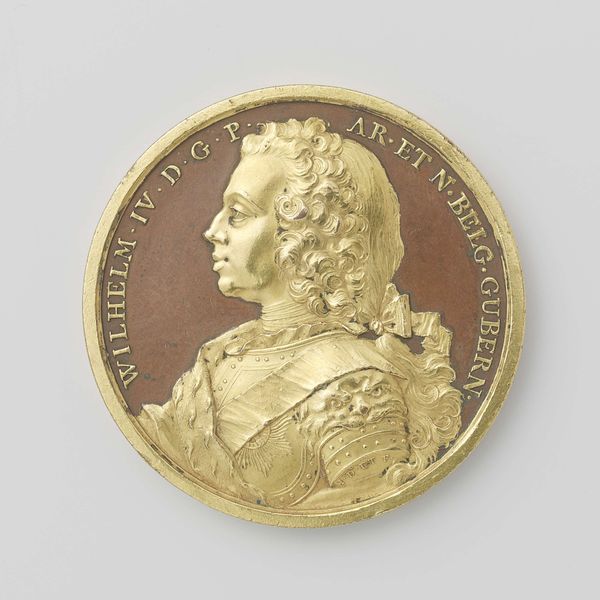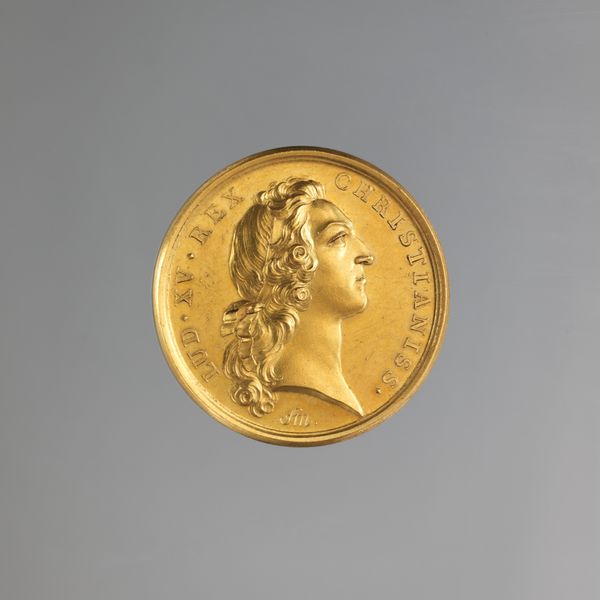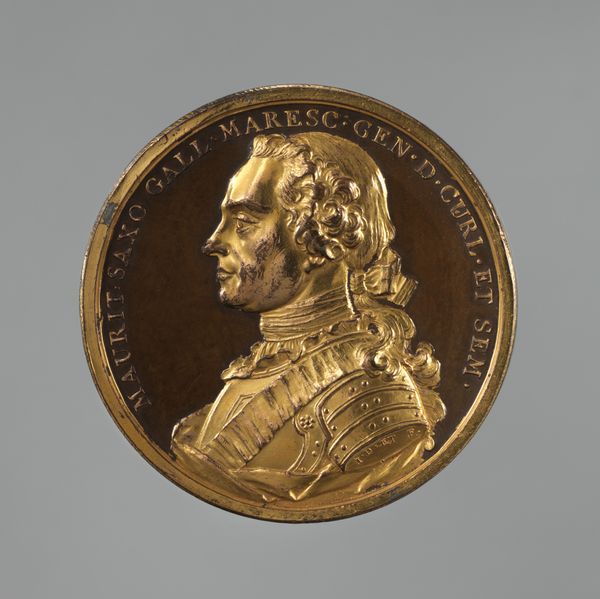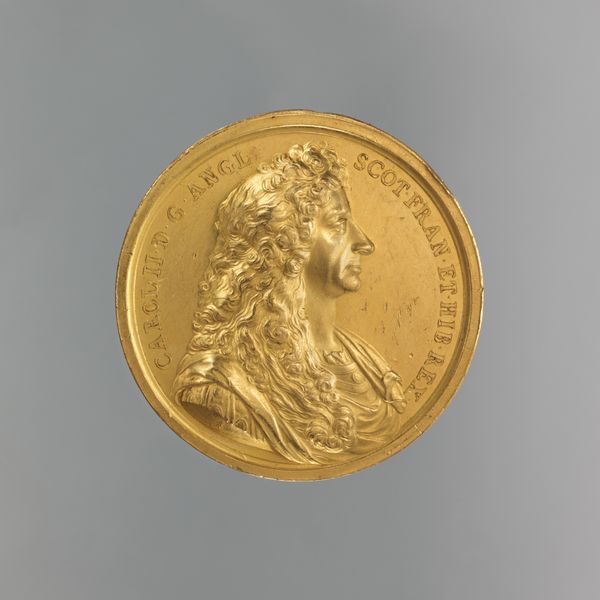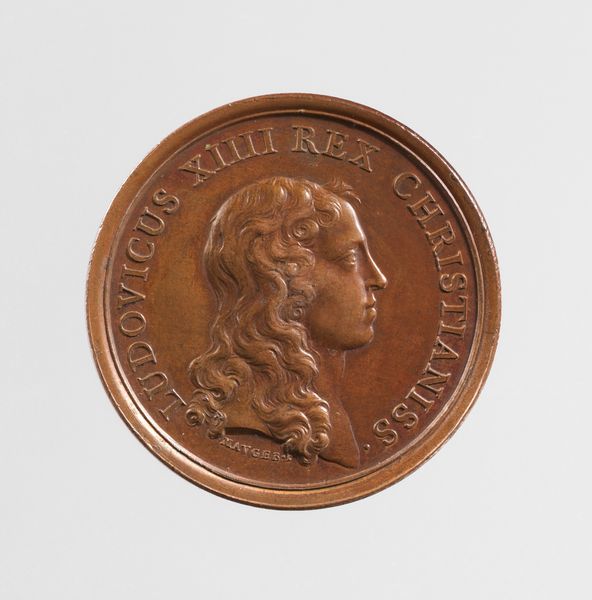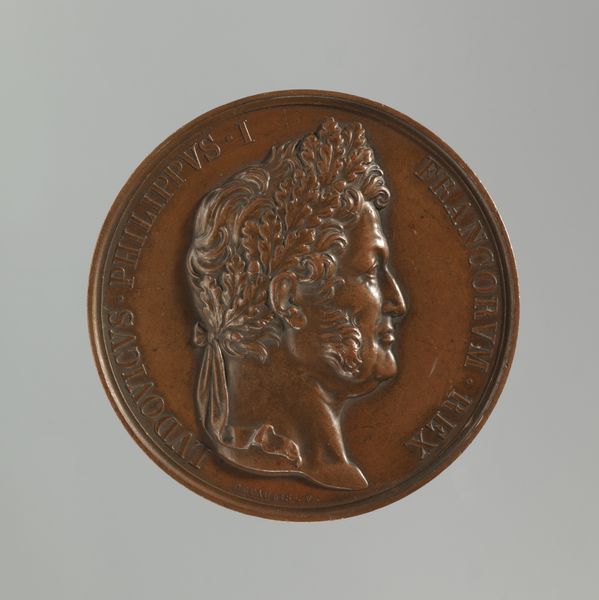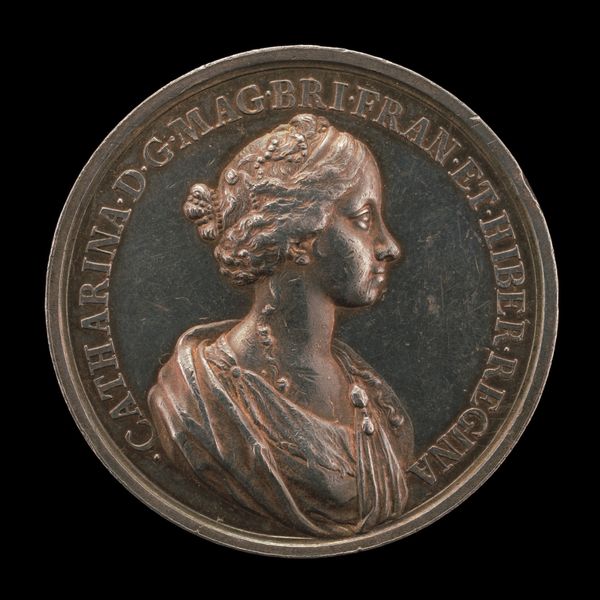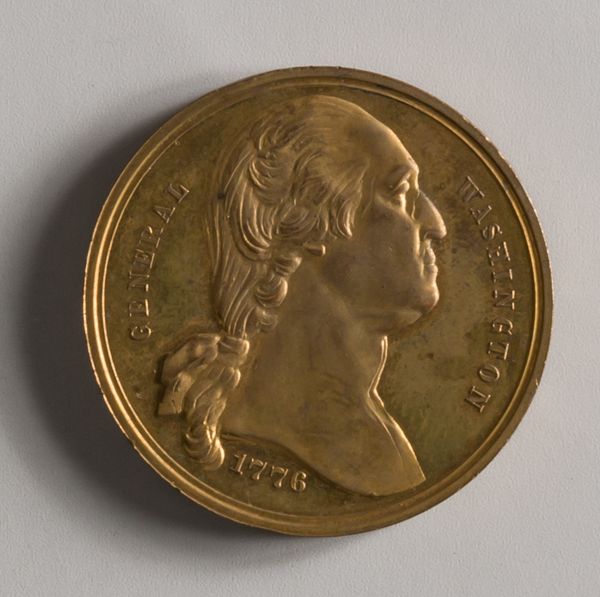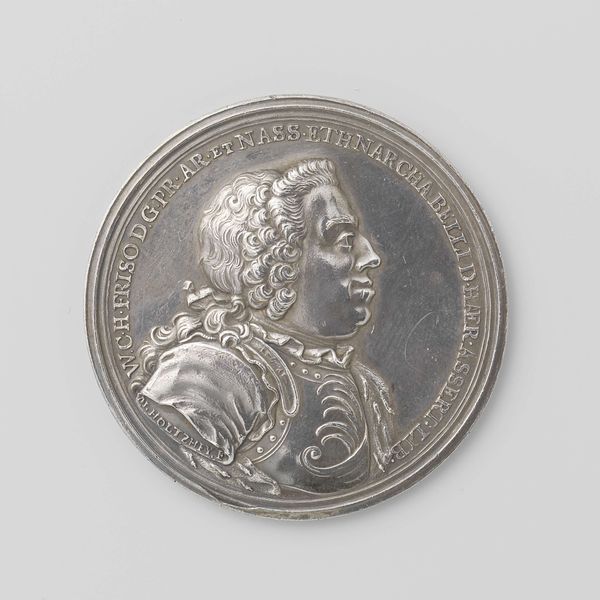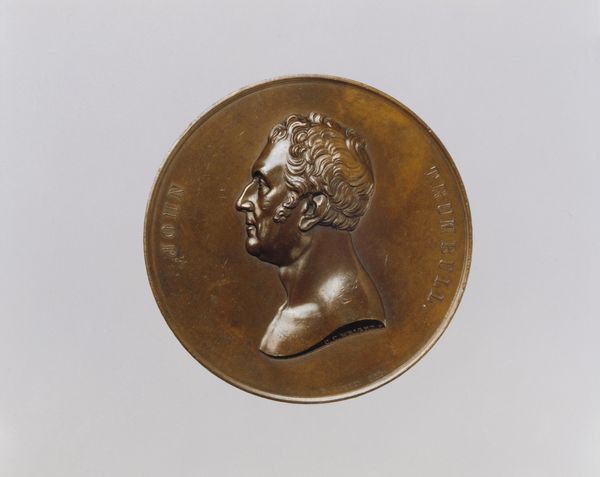
brass, relief, sculpture
#
brass
#
baroque
#
relief
#
sculpture
Dimensions: Confirmed: 3/16 × 1 5/8 in. (0.5 × 4.1 cm)
Copyright: Public Domain
Curator: Here we have Jean Le Blanc’s relief sculpture, “Louis XV: Education of the King,” made in 1717. The circular relief appears to be constructed with a combination of brass and what looks like wood or a darkened metal. Editor: It certainly radiates authority. There's an immediate sense of rigid social hierarchy. Curator: Absolutely. Let's delve into the making of this piece. We can see the craftsmanship in the ornate brasswork depicting young Louis XV. The use of such costly materials—the gilded brass, the carefully crafted wooden base—speaks to the power and wealth concentrated around the monarchy. The labor that went into creating something like this tells a lot about the structures of power at the time. Editor: True, the means of production clearly underscore social class. Considering that context, how does the medium amplify themes of control? The subject, after all, is the king's education, and even here his power is literally cast into form. Curator: In terms of materials, this brass relief offered a relatively durable method for promoting royal iconography at the time, even compared to, say, portraiture on canvas, given its ability to be duplicated and disseminated. Moreover, it projects power because brass was seen as precious, and difficult to obtain. It's a very top-down depiction of not only royalty, but the idea of absolute control from a male point of view. Editor: Exactly, and the choice of rendering the king's effigy in metal points toward its lasting permanence, literally and metaphorically embedding itself in social consciousness. It almost feels like propaganda using the art medium as a tool of oppression. Curator: Precisely. Considering Baroque art of the period, this object presents interesting discourse. It highlights the socio-economic systems upon which it relies. Le Blanc gives shape to dominant power relations in 1717. Editor: Indeed. By examining this object so thoroughly, we're made conscious not only of the monarchy’s grip but the quiet forms of resistance we may enact against that power. Curator: Looking at it, I feel equipped with knowledge and understanding and thus inspired to think deeply about hierarchical systems around me, the intersectionality of class, gender and representation in material culture. Editor: Yes, I see now that the inherent political project of such a relief allows us to question how making processes might shape meaning and reinforce ideological beliefs about power and representation.
Comments
No comments
Be the first to comment and join the conversation on the ultimate creative platform.


